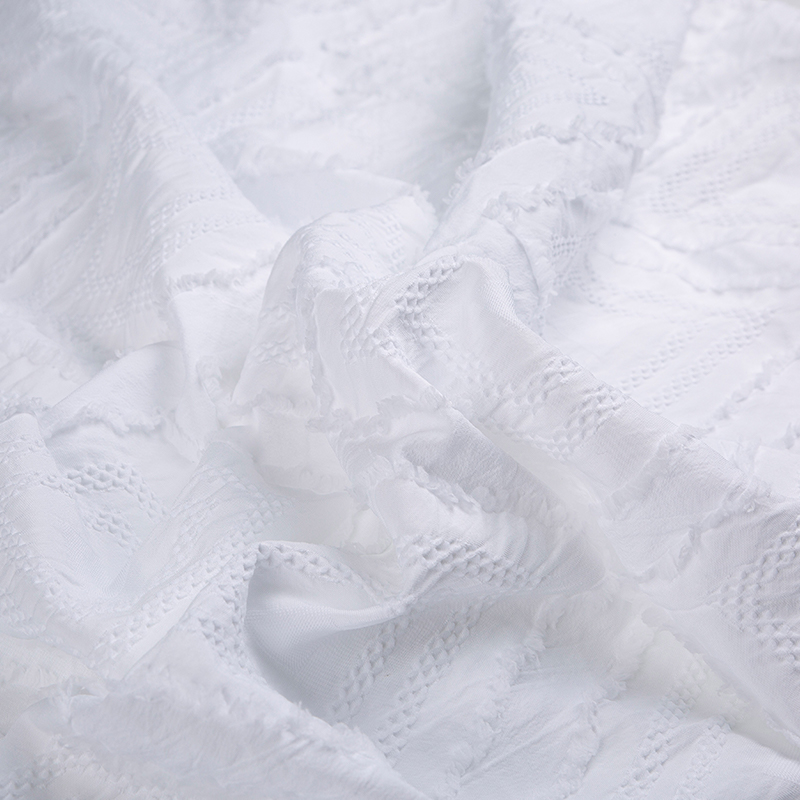Premium quality since 2002!
The question, "What does polyester fabric feel like?" is one that doesn't have a single, simple answer. As one of the most widely used synthetic fibers globally, the tactile experience of Polyester Fabric is surprisingly diverse, heavily dependent on its weave, finish, and whether it is blended with other materials.
At its core, polyester is a man-made polymer, which means it starts as a plastic-based fiber. This fundamental composition imparts several key sensations and characteristics that define its feel against the skin.
The Standard Polyester Sensation: Smooth and Slippery
When you first touch a standard, pure Polyester Fabric, you will often notice a few common tactile traits:
-
Smoothness: The individual filaments of polyester are fine and uniform, which, when tightly woven, results in a surface that is typically very smooth to the touch.
-
Slightly Slippery Feel: Due to its polymer structure, the fabric can have a subtly slick or even "slippery" sensation. This is a common characteristic that distinguishes it from the more textured feel of natural fibers like cotton or linen.
-
Lightweight Drape: Most polyester is lightweight, which contributes to its drape. While some weaves can be crisp, many types offer a fluid, flowing drape, sometimes mimicking the elegance of silk, though without the same natural warmth or cool touch.
The Feel of Quality and Weave: A World of Difference
The quality and manufacturing process profoundly alter the feel of Polyester Fabric. Modern advancements have allowed manufacturers to engineer polyester to imitate a wide range of textures:
-
High-Quality vs. Low-Quality: Low-quality or coarsely woven polyester may feel stiff, thin, or even slightly scratchy against sensitive skin. Conversely, high-quality polyester often has a surprisingly soft hand, sometimes even comparable to natural fibers.
-
Microfiber Polyester: This is an example of advanced engineering. Crafted with ultra-thin fibers, microfiber polyester is exceptionally soft, plush, and luxurious, making it a popular choice for bedding, cleaning cloths, and absorbent towels.
-
Textured Finishes: Manufacturers can apply different finishes to create varied sensations. A brushed finish can give the fabric a fuzzy, soft texture similar to flannel or fleece, making it warm and cosy. A satin finish yields a lustrous, silky smooth surface ideal for linings and formal wear.

The Wear Experience: Trapping Heat vs. Wicking Moisture
Beyond the initial touch, thefeelof Polyester Fabric when worn is about performance:
-
The Breathability Trade-Off: Traditional, non-treated polyester is inherently less breathable than natural fibers like cotton. This means it can trap heat and moisture, leading to a warmer, potentially clingy or clammy feeling, especially in hot or humid conditions.
-
The Sports Factor (Moisture-Wicking): This drawback is cleverly countered in activewear. Polyester is hydrophobic—it repels water rather than absorbing it. Modern sports and performance Polyester Fabric is engineered to be moisture-wicking, meaning it draws sweatawayfrom the skin and quickly releases it to the surface for evaporation. This results in a feel that is dry and cool, making it ideal for high-intensity activities.
-
Durability and Resilience: The sturdy nature of the fabric means it retains its shape well. When you wear a polyester garment, it feels firm, resilient, and resistant to wrinkles and stretching, maintaining a smooth appearance throughout the day.
In conclusion, when considering what does polyester fabric feel like, it's best to think of a spectrum. It ranges from a stiff, slightly plastic-like texture in its simplest forms, to a luxurious, microfiber softness, or a high-performance, dry, and slick sensation in modern activewear. Its remarkable versatility, durability, and cost-effectiveness ensure that this synthetic fiber will continue to be engineered into fabrics for virtually every use.

 English
English 简体中文
简体中文









